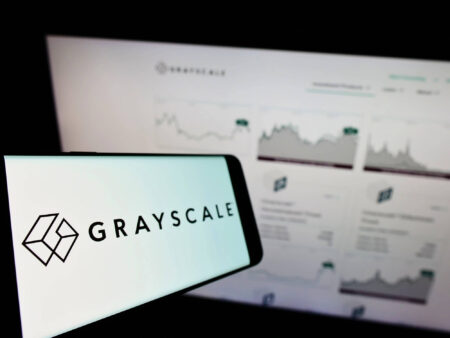Astar (ASTR) Value Soars: Protocol Enhancements and Practical Use Cases Drive Cryptocurrency Growth
- Astar (ASTR) surged 1.95% as protocol upgrades and real-world adoption drive institutional confidence and whale accumulation. - Tokenomics 3.0 shifts to a fixed 10.5B supply by 2026, aligning incentives with deflationary mechanisms and cross-chain interoperability. - Partnerships with Casio, Sony , and Animoca expand ASTR’s utility in loyalty programs and Web3 ecosystems, boosting on-chain activity. - Despite a 24-hour volume of $5.6M, challenges like DeFi TVL declines and liquidity risks remain critical
Protocol Upgrades: Astar Evolution Phase 2 and Tokenomics 3.0
ASTR’s core value lies in its vision for Astar Evolution Phase 2, a long-term plan aimed at boosting scalability, cross-chain compatibility, and token functionality. A central feature of this phase is the Burndrop PoC, which enables
Another major milestone is Tokenomics 3.0, expected in early 2026, which will transition Astar’s monetary policy from an inflationary model to a capped supply of 10.5 billion ASTR. This change is designed to provide greater certainty for institutional investors and reduce valuation unpredictability. By moving from variable inflation to a fixed supply, Astar aims to address a key challenge in crypto markets—volatility caused by unclear monetary frameworks
Astar 2.0: Redefining DeFi and Cross-Chain Utility
The launch of the Astar zkEVM mainnet in 2024 marked a pivotal step for Astar’s DeFi ambitions. By supporting Ethereum-based apps with reduced gas costs and faster transactions, the network is challenging older blockchains while staying compatible with Ethereum’s developer base. This is further enhanced by integrations with cross-chain solutions such as LayerZero, which allow for smooth asset movement between
To further enhance its ecosystem, Astar rolled out dApp Staking v3 in 2024, a system that incentivizes both liquidity providers and governance participants. This dual rewards model increases user involvement and creates a positive feedback loop, where more participation leads to greater network value. Additionally, collaborations with major Japanese web2 companies like Casio and Mazda are integrating ASTR into practical applications, such as loyalty programs and digital identity, expanding its use beyond trading
Real-World Adoption: Partnerships and On-Chain Growth
The recent price increase aligns with a 20% rise in active ASTR addresses during Q3 2025, highlighting a surge in on-chain engagement
Confidence from large investors is also growing. According to the Chronicle Journal, whales have accumulated $3.16 million worth of ASTR, indicating that major players see the token as a valuable asset. This is further supported by Astar’s annual emission reduction of 11%, a measure intended to limit new supply and increase scarcity
Challenges and Risks
Despite these strengths, ASTR is not without challenges. The DeFi sector as a whole has experienced a $11.96 billion decline in total value locked, and Astar’s daily trading volume of $5.6 million is still modest compared to leading assets. Limited liquidity and ongoing market swings could heighten risks if adoption slows or if broader economic conditions worsen.
Conclusion: A Calculated Bet on the Future
Astar’s recent gains reflect a strategic wager on the intersection of protocol upgrades and tangible utility. By revamping its tokenomics, improving cross-chain capabilities, and building strong partnerships, Astar aims to serve as a bridge between conventional and decentralized systems. However, realizing this vision depends on the successful rollout of its 2026 roadmap and the ability to maintain user momentum. For investors, the main message is this: ASTR’s worth is grounded in a clear, forward-looking plan, not just market speculation.
Disclaimer: The content of this article solely reflects the author's opinion and does not represent the platform in any capacity. This article is not intended to serve as a reference for making investment decisions.
You may also like
COAI's Abrupt Decline: What Causes a Significant Downturn in a Previously Popular Tech Index?
- COAI index plunged 88% in November 2025 due to regulatory ambiguity, earnings underperformance, and macroeconomic risks. - CLARITY Act left AI/crypto projects in legal gray areas, exacerbating volatility as investors fled speculative assets. - C3.ai's $116.8M loss, leadership turmoil, and 54% stock decline heavily dragged COAI's performance. - Global risk-off behavior and AI-driven trading amplified volatility amid Fed policy uncertainty and inflation concerns. - Market reassesses AI/crypto valuations as
Grayscale prepares to launch a Dogecoin ETF

Crypto Assets to Watch This November: Three Altcoins Ready for Lift-Off

Vitalik Buterin Critiques FTX, Emphasizes Ethereum’s Decentralized Nature
